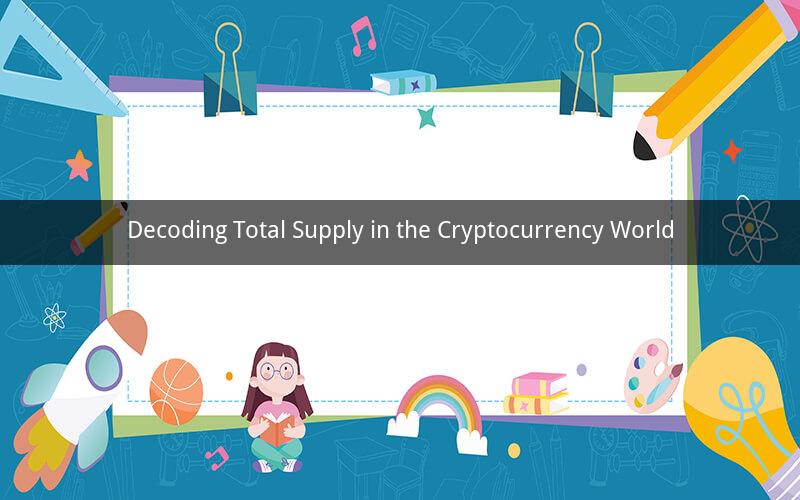
In the rapidly evolving cryptocurrency landscape, the term "total supply" plays a crucial role in shaping the market dynamics and investor decisions. This article delves into what total supply signifies in the crypto universe, exploring its implications and the factors that influence it.
Understanding Total Supply
Total supply refers to the maximum number of units that can be produced or minted within a cryptocurrency network. It is a predefined parameter set by the creators of the digital currency, often known as the "max supply" or "ultimate supply." The concept of total supply is unique to cryptocurrencies, as it differs from traditional fiat currencies, where the supply is controlled by central banks.
The Importance of Total Supply
1. Inflation Control: The total supply of a cryptocurrency serves as a measure of inflation control. Since cryptocurrencies are not backed by any physical assets or fiat currency, their value is largely influenced by supply and demand dynamics. A limited total supply can help maintain the value of the currency over time, as the scarcity increases with each unit minted.
2. Market Confidence: A transparent and predetermined total supply instills confidence among investors and users. It ensures that the currency will not be subject to arbitrary changes in supply, which could negatively impact its value.
3. Price Stability: Cryptocurrencies with a limited total supply tend to experience less volatility in their prices. This stability can attract a broader range of investors, including those seeking long-term investment opportunities.
Factors Influencing Total Supply
1. Algorithmic Design: The algorithmic design of a cryptocurrency network determines the rate at which new units are minted and the total supply. For example, Bitcoin follows a proof-of-work algorithm that reduces the reward for mining new blocks over time, leading to a gradual decrease in the total supply.
2. Community Decisions: In some cases, the total supply of a cryptocurrency can be adjusted through community consensus. For instance, Ethereum's upcoming merge to proof-of-stake could potentially alter its total supply.
3. Market Demand: The demand for a cryptocurrency can also influence its total supply. If the demand increases, developers may choose to increase the supply to meet the market needs.
Top Cryptocurrencies by Total Supply
1. Bitcoin (BTC): As the first and most well-known cryptocurrency, Bitcoin has a total supply of 21 million units, making it the most scarce.
2. Ethereum (ETH): Ethereum has a total supply of 18 million units, with a maximum supply of 120 million units.
3. Litecoin (LTC): Litecoin has a total supply of 84 million units, with a maximum supply of 84 million units.
4. Binance Coin (BNB): Binance Coin has a total supply of 200 million units, with a maximum supply of 200 million units.
5. Cardano (ADA): Cardano has a total supply of 45 billion units, with a maximum supply of 45 billion units.
Frequently Asked Questions
Q1: What is the difference between total supply and circulating supply?
A1: Total supply refers to the maximum number of units that can be produced, while circulating supply represents the number of units currently in circulation.
Q2: Can the total supply of a cryptocurrency be changed?
A2: In most cases, the total supply of a cryptocurrency is predetermined and cannot be changed. However, some networks may implement changes through community consensus.
Q3: Why is the total supply important for the value of a cryptocurrency?
A3: The total supply affects the scarcity of the currency, which in turn influences its value. A limited total supply can help maintain or increase the value of the currency over time.
Q4: How does the algorithmic design of a cryptocurrency network affect its total supply?
A4: The algorithmic design determines the rate at which new units are minted and the total supply. For example, Bitcoin's algorithm reduces the reward for mining new blocks over time, leading to a gradual decrease in the total supply.
Q5: Can the total supply of a cryptocurrency be infinite?
A5: In most cases, the total supply of a cryptocurrency is finite and predetermined. However, some networks may choose to allow an infinite supply, which can have varying implications for the currency's value and market dynamics.